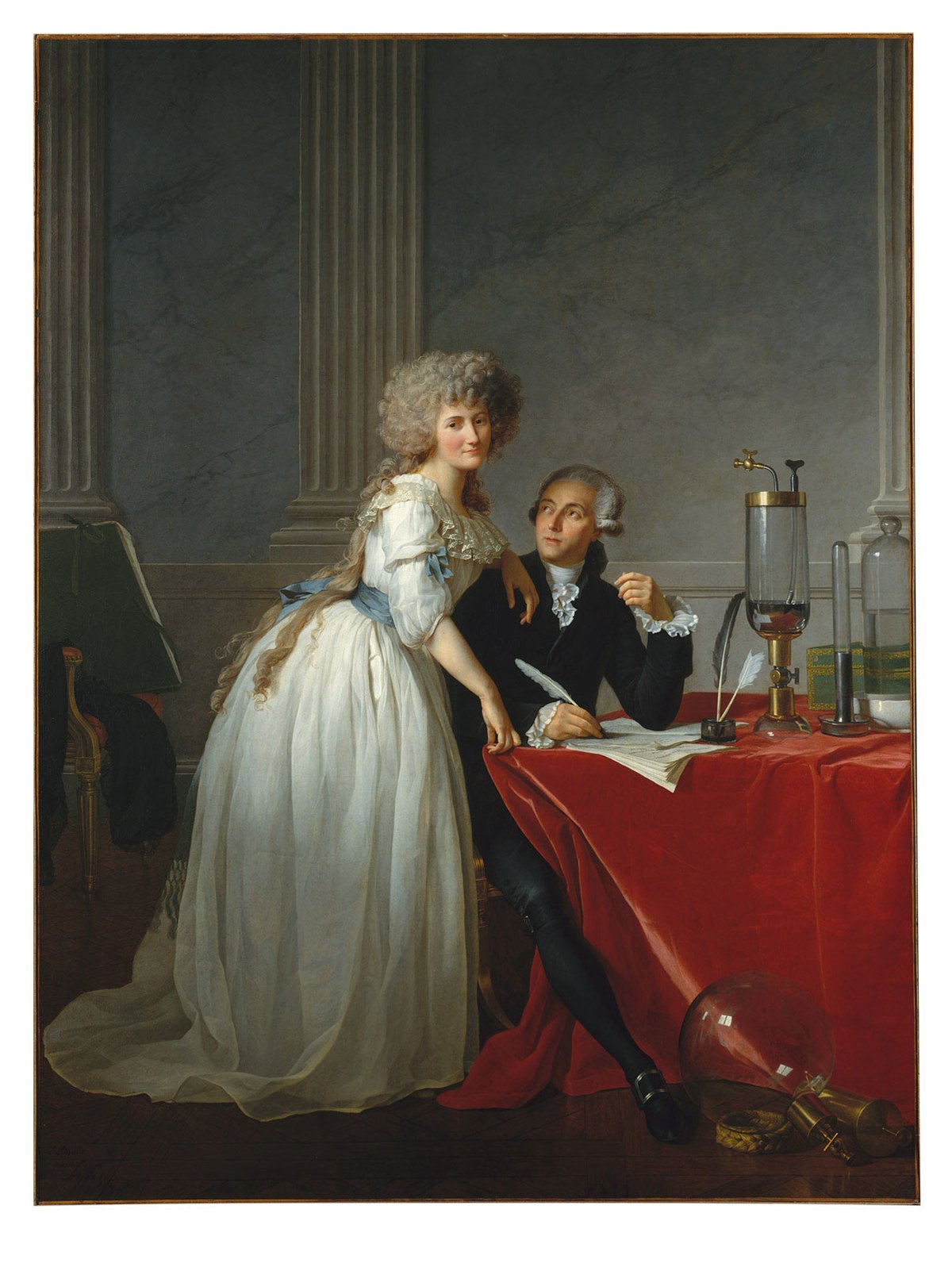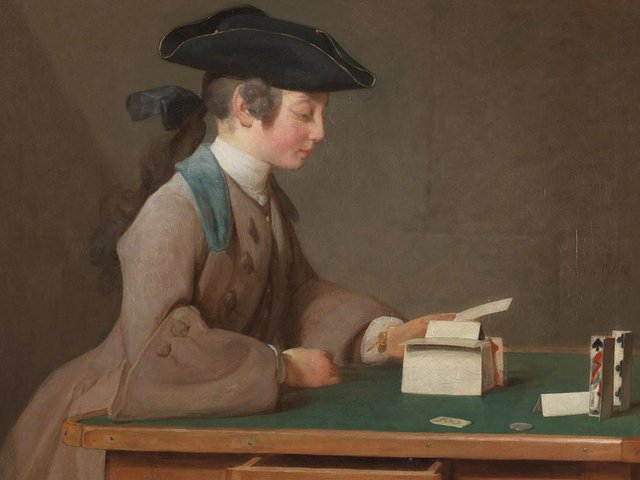The Metropolitan Museum of Art in New York houses some of Europe’s most famous paintings. These include, to name the most stylistically diverse among the French School, Watteau’s Mezzetin and Jacques-Louis David’s The Death of Socrates, as well as more than a half dozen each by Boucher, Greuze, Fragonard and Hubert Robert.
The pictures in this catalogue range in date from Hyacinthe Rigaud’s Portrait of a Man (1693) to Prud’hon’s full-length portrait of Talleyrand (around 1816-17). They are ordered chronologically by artists’ birthdates rather than alphabetically by artist name, but a list of contents provides guidance.
Oddly, the reasons given both for the catalogue extending beyond the 18th century and for the manner of ordering the entries are tucked away in an endnote to a summary history of the Académie Royale de Peinture et de Sculpture. Altogether 126 pictures and pastels are discussed in a catalogue best described as a hybrid.
As the author writes in a prefatory note, the printed publication presents an opinion in a moment of time
As the author writes in a prefatory note, the printed publication presents an opinion in a moment of time and is intended to be used in conjunction with the Met’s ever-growing and changing web records. Hence, the limited references and notes of exhibitions for individual pictures in the book are supplemented by information available online on the Met’s website.
Almost inevitably there are lacunae and inaccuracies in the online references, but online references can be quickly remedied. It is not clear, however, how often, how promptly, for how long or how completely the Met will undertake updates. The online record of its version of Chardin’s Soap Bubbles does not (yet) correct the printed catalogue’s reference to the London National Gallery’s The House of Cards and The Young Schoolmistress being a presumed pair.
It is also confusing to find that the (very good) online catalogue entry by Asher Miller on François Gérard’s portrait of Talleyrand predates by five years the somewhat different version in the book. The Met’s online search function is a substitute for an index but the volume in print does include a bibliography and biographies of the artists. Disappointingly, the printed volume contains few technical notes on the pictures or X-ray or other technical images. The quality of the online images of the paintings is excellent, however, as is the ability to magnify them enough to count the brushstrokes.
The stated reason for rationing information is “[to resist] the idea that everyone who consults such a book wants to know as much as those of us who write them”. Some will see this as an act of mercy, others as an act of condescension. For my part, I think it is better to write more and let the reader choose what to skim or even ignore. I should also like to know more for two other reasons.
First, although, as Katharine Baetjer rightly says, the job of the catalogue is to help the viewer understand what he or she sees, it is also the best opportunity to state what cannot be seen, including inscriptions and labels on the reverse of the picture’s support and frame. Second, given the author’s long familiarity with the pictures, she can be assumed to know much about them. When she transcends these (self- ?) imposed limitations, she writes with good sense and clarity. She does, however, let slip the occasional non-sequitur; for example, “[Mme de Talleyrand] was wealthy in her own right and so cannot have been as unintelligent as is often alleged” – perhaps a subconscious absorption of the values of the Upper East Side.
The catalogue entries provide able summaries of most of the existing literature but little new information that deeper interrogation of the paintings might have yielded
The catalogue entries provide able summaries of most of the existing literature but little new information that deeper interrogation of the paintings or archival research might have yielded. For example, in the entry on Nattier’s Mme Marsollier and her Daughter (1749), one of the artist’s most accomplished pictures, there is no discussion of why such prominence is given to the casket being held by the young Marie-Thérèse; in Card Players in a Drawing Room by Pierre-Louis Dumesnil (le jeune) – if the weakly painted figures are indeed by him – more investigation might have been made of the mantelpiece and furnishings in the room depicted; and while Baetjer correctly identifies the object held by Mme de Jullienne in Charles Antoine Coypel’s portrait of her and François de Jullienne as a shuttle for making knots, she does not draw the obvious conclusion that it alludes to the ties of marriage.
The entry for Guillaume Voiriot’s portrait, Monsieur Aublet Playing a Guitar, suggests no more precise identification of the sitter. He may have been the lawyer Aublet de Maubuy, author of Les Vies des femmes illustres de la France (1762-68). Publication of Aublet’s Traité des dépôts volontaires, nécessaires, judiciaires et autres was announced in the June 1782 edition of the Journal des Savants, so coinciding with the portrait’s exhibition at the Salon de la Correspondance.
In relation to Piat-Joseph Sauvage’s two small pictures of a nymph and putti on slate, no comment is offered on the relative rarity of that support in 18th-century France and, in relation to the date of Watteau’s Mezzetin, one of the artist’s best-known pictures, Baetjer writes only that it is dated by consensus to the years 1718-20 but offers no analysis of that consensus, nor any reason why she agrees.
Finally, the preliminary essay on the history of the Académie does not go beyond what has already been published in English. Notwithstanding these few gripes, the competent and cogent summaries of the pictures in this catalogue, together with the online images, can be recommended as an excellent initial resource.
Katharine Baetjer, French Paintings in the Metropolitan Museum of Art from the Early Eighteenth Century through the Revolution, The Metropolitan Museum of Art, in association with Yale University Press, 408pp, £70 (hb)
• Humphrey Wine is the Honorary Research Fellow at the University of Western Australia. His National Gallery Catalogues: the Eighteenth Century French Paintings was published in 2018




